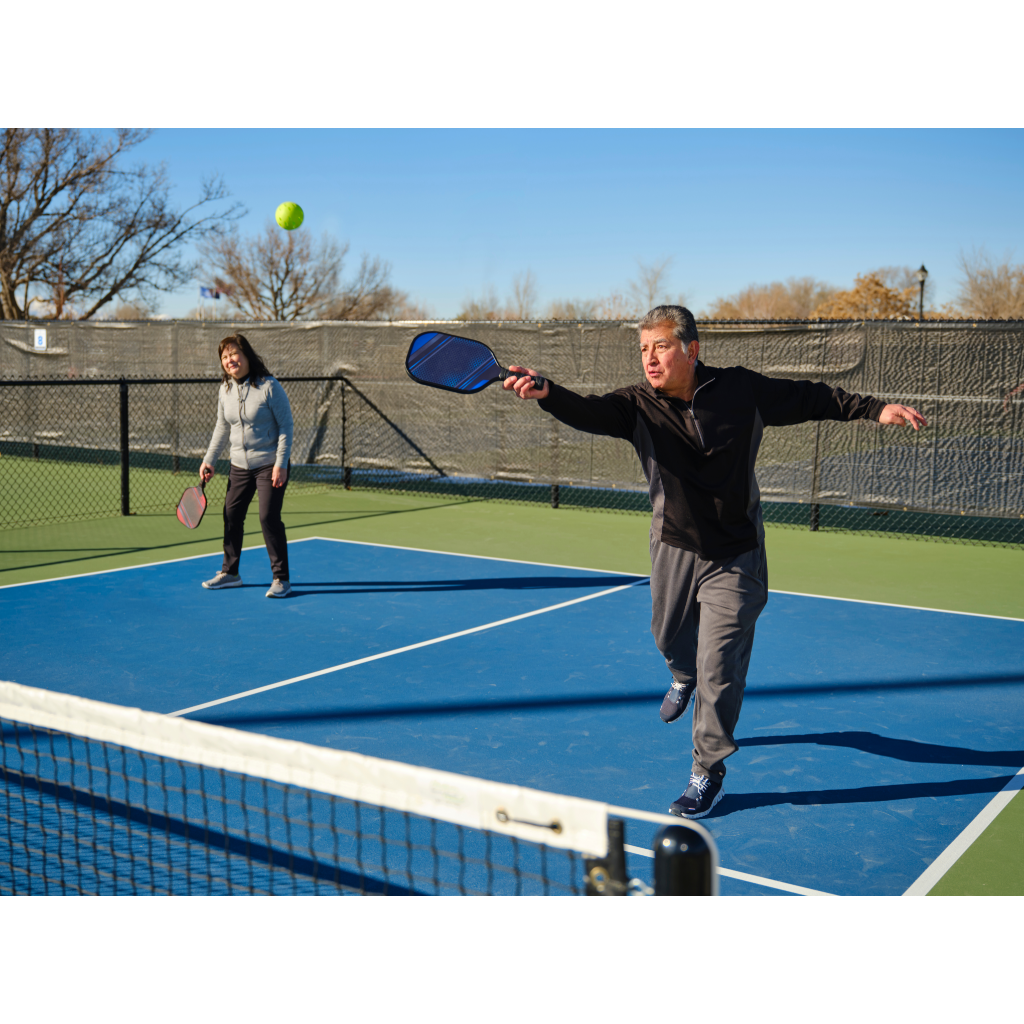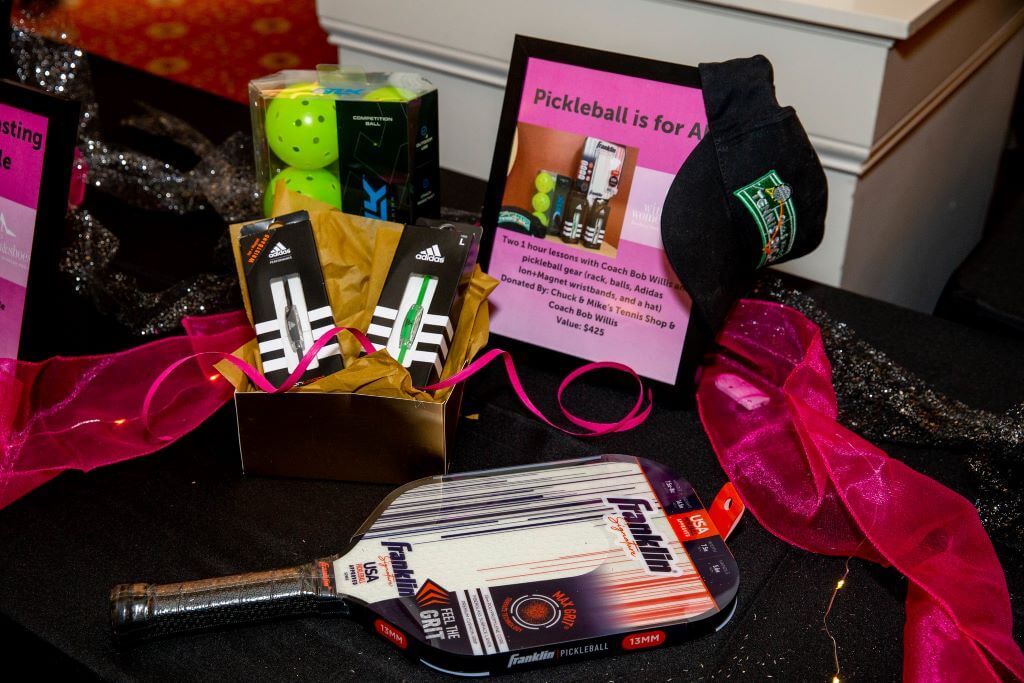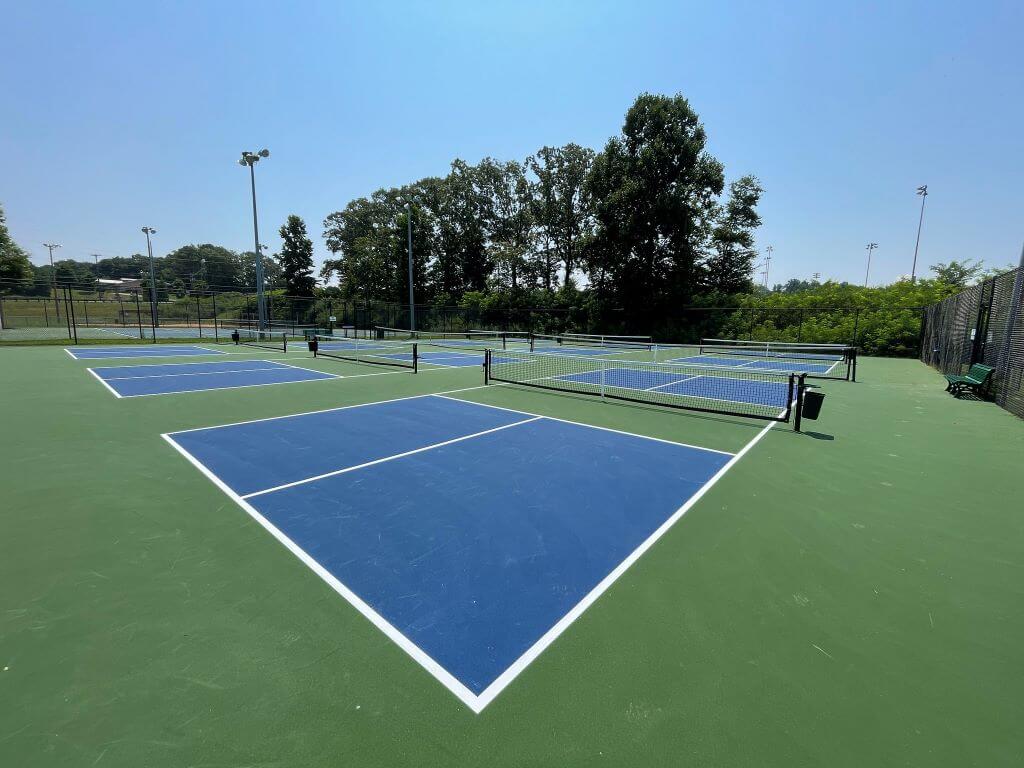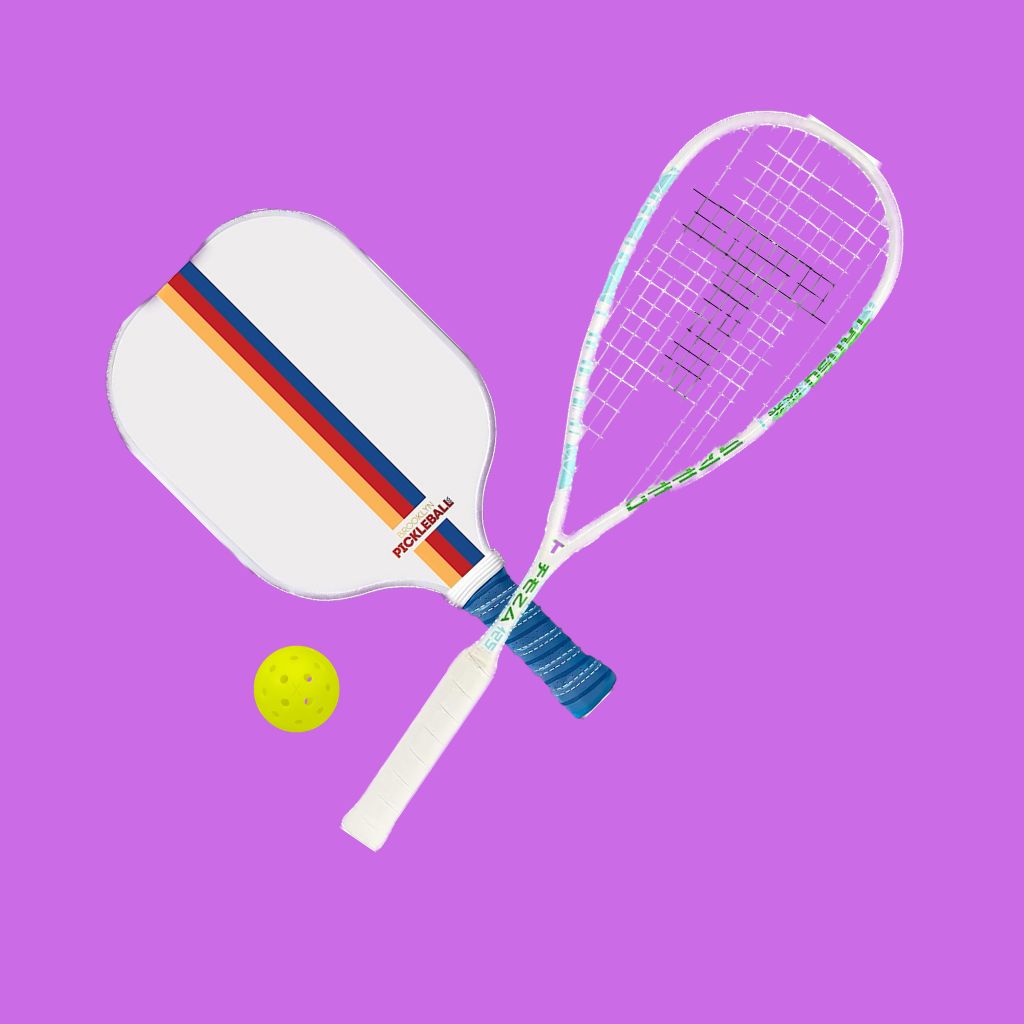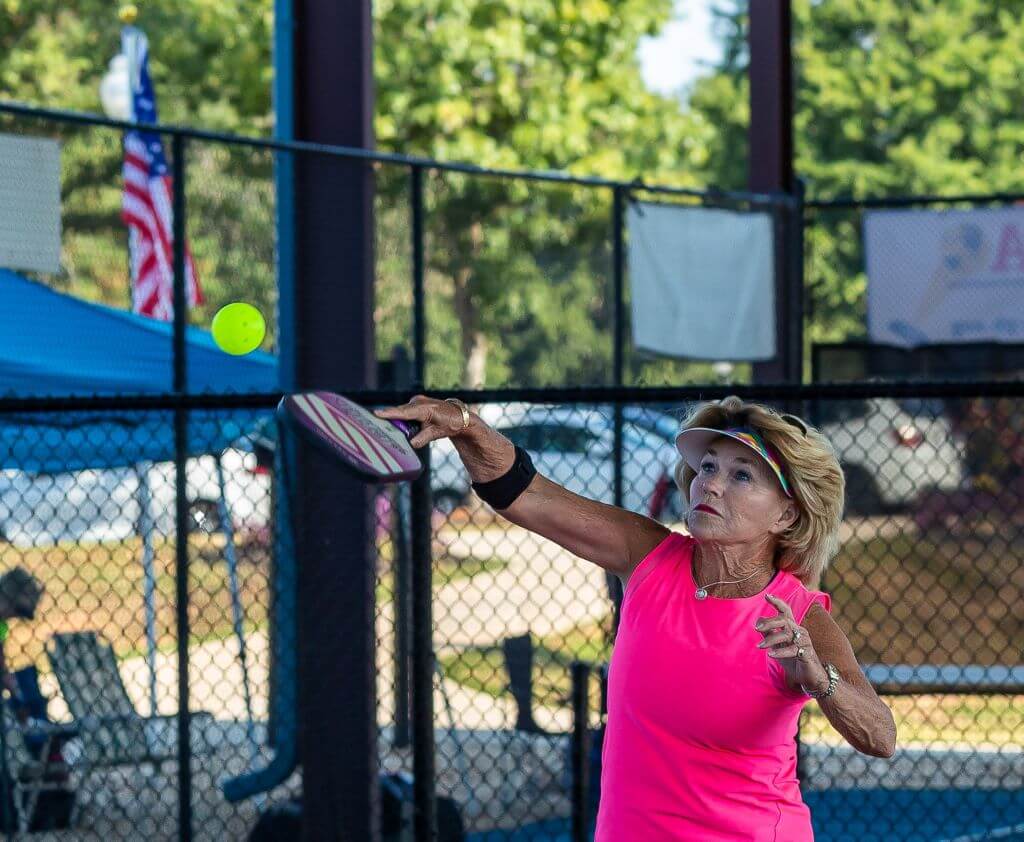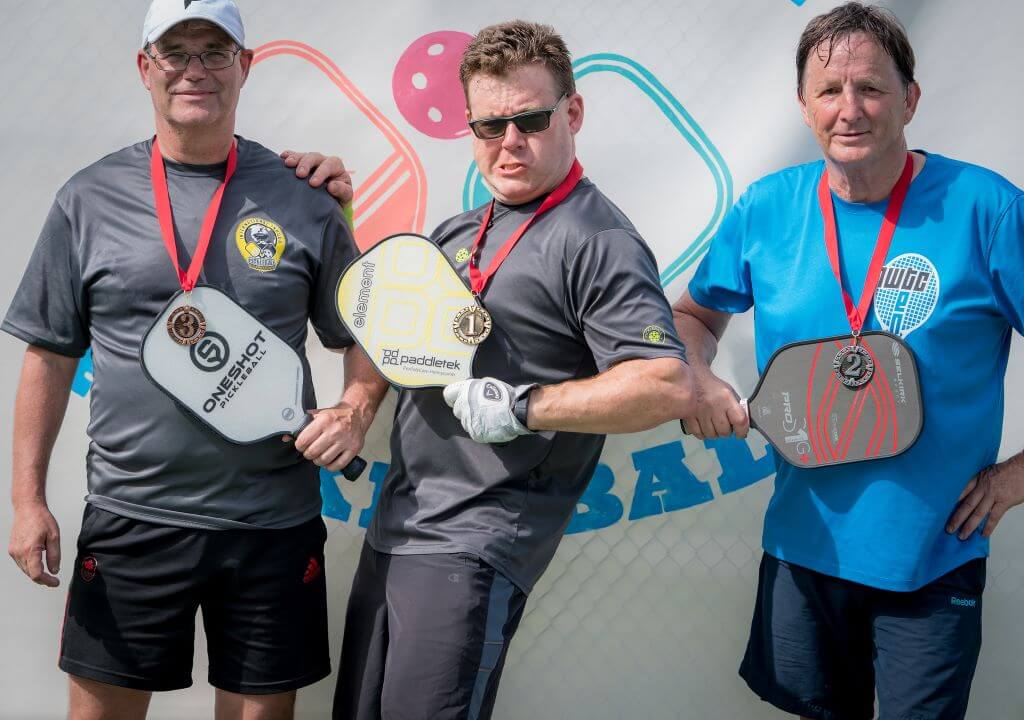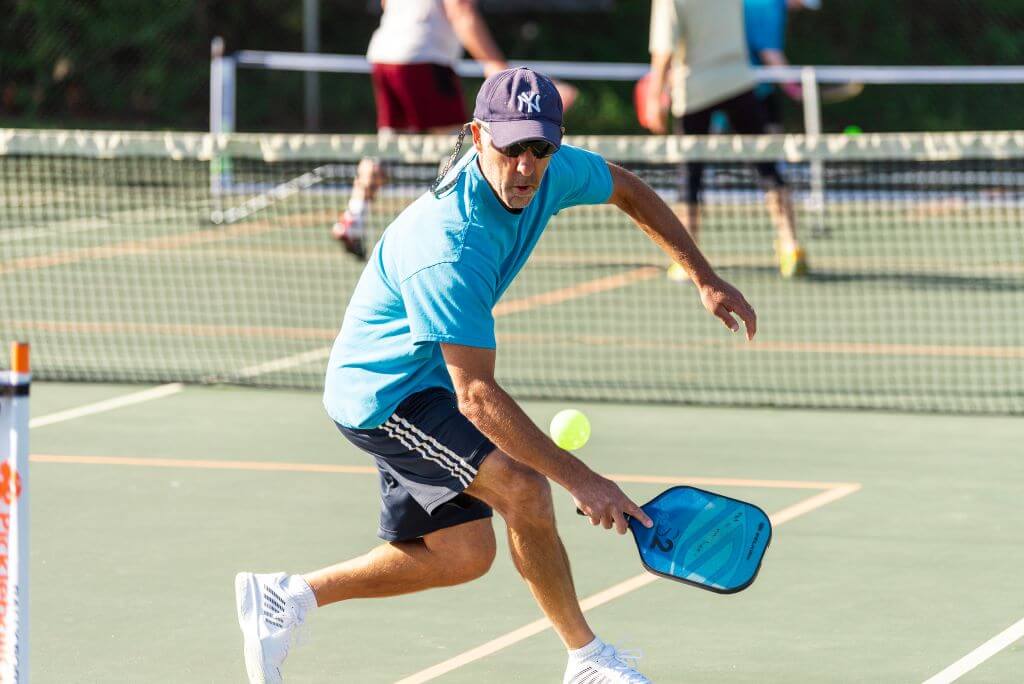Implementing effective strategies is essential in pickleball, a game that needs physical and mental prowess to win. Whether you’re a newbie or advanced player, or frequently play singles or doubles, being strategic about your moves can greatly improve your performance and help you win more games.
So what is the best pickleball strategy? There are a lot to keep in mind. In this article, we talk about advanced pickleball strategies to make you a better, more clever pickleball player overall.
Let’s begin.
Best Pickleball Strategies
The first thing you need to do is to read and get yourself acquainted with the information found in the Official Pickleball Rulebook of the USA. There, you’ll find everything you need to know about the sport.
You can’t master the best tips and strategies of pickleball if you aren’t yet familiar with all the faults and rules of the game, so read up! Once done, get on the court and follow these best pickleball strategies.
-
Stay Near to the Non-Volley Line.
As the receiver of a serve, you will have a high chance of winning the rally if, after returning the serve, you can quickly move forward to the non-volley line or kitchen line. This area near the net is where many points are won or lost, so you’ll be in a better position to control the game and respond to your opponents’ shots.
You’ll want to keep your opponents away from the kitchen line by hitting shots that force them to move back.
-
Get Better at Drop Shots.
Even though it’s challenging to master, a drop shot is a great pickleball doubles shot choice and tactic each time you and your partner aren’t at the non-volley line, but the opposing team is.
Remember that to control the kitchen line is to control the game. Using a drop shot will send you and your partner to the non-volley line, eliminating the natural advantage your opponents had before.
After the return-of-serve, the serving team frequently hits the drop shot, or they hit low. This is why drop shots are frequently referred to as the “third shot drop” because players tend to execute it on the third shot.
NOTE: Learn to vary your shots with drives, drop shots, and dinks to keep your opponents off balance. Lobs can be effective but use them sparingly as they can be risky and open you up to aggressive returns.
-
Do Not Let the Opponents Leave the Baseline.
You’ll want to keep your opponents held back using longer shots if you and your partner are moving around the non-volley line. Right now, the deck is stacked in your favor.
A shorter shot moves your opponents closer to the non-volley line, where they can neutralize your advantage.
To maintain a lead in the rally, it is better to hit shots that keep your opponents confined to their court.
-
Hit at the Opponent’s Feet.
Returning a ball at your feet without bouncing it up is exceedingly difficult. Hit the ball at your opponents’ feet if they are in the transition area, which is the space between the baseline and the non-volley line. Keep them pinned back and strike the ball at their feet if they are close to the baseline.
-
Serve Deep.
After getting the serve in, hitting it deep is the main objective of serving. Remember pickleball doubles strategy #1.
After returning your serve, your opponent will want to go to the non-volley line. But they’ll have a hard time doing so if you served deep.
Contrary to popular assumption, serving with a considerable speed that falls several feet within the baseline is better than letting the ball hit with a high-arcing ball that settles deep in the opponent’s court.
-
When Returning Serves, Don’t Stand Too Close to the Baseline.
When returning serves, players frequently stand along the baseline or even a foot or two inside the baseline. It’s better to position yourself 2 to 3 feet behind the baseline unless you are aware that the serve will likely be hit short.
With this, you will have enough time and room to step into the ball when you hit the return. When the ball is served deep, you won’t get stuck anymore. Thus, you do not hand your opponents an easy point.
-
Return with Deep Serve.
Focus on returning the ball deep into your opponents’ court, close to the baseline, to limit their offensive opportunities. A deep return offers many benefits. One benefit is that it provides the returner more time to track the serve return and move to the non-volley line.
It also lengthens and significantly increases the difficulty of the serving team’s third shot. So, target the player with a weaker chance at a third shot to put them under pressure.
-
Communicate for Each Middle Shot.
This is for doubles pickleball. Partners should talk to each other, especially when returning shots come in the middle of the court. Shots that are hit in the middle of the court often cause confusion and disagreement over which partner should strike them, especially if there are both left and right-handed players.
As a team, you should choose who will attempt the middle shots before the game starts. You don’t want to be bumping into each other during the match.
TIP: The general rule of thumb is that whoever stands in position for the center shot on the forehand side will plunge to hit the middle shots. At the very least, shout “mine” or “yours” to one another to communicate while in-game.
-
Move Together.
You and your partner should always move together when playing doubles. Move as if you are tied together by an 8- to 10-foot rope. The partner hitting the ball determines when and where the team moves.
Work as a team to ascend and descend. And as a team, sway from side to side. Partners need to move together to maintain proper court coverage and avoid creating gaps that opponents can exploit.
-
Stay Calm and Enjoy.
The most challenging pickleball technique to master is staying calm. Being calm during a game not only reduces service faults, but also keeps your mind clear and sharp during a pickleball game.
Being patient is the best pickleball strategy that requires choosing your shots carefully. Read the court in order to avoid doing unnecessarily tricky shots that give your strategy away. For example, consider a more conservative shot if you can’t strike the ball with a downward blow to get it over the net.
The best way to remain calm during a game is to have enough practice. Play with different types of players, and play to have fun, not just to win. Remind yourself that it’s okay to lose once in awhile. The important thing is to learn something new after each game.
-
Pick the Position.
Maintaining proper positioning allows for effective court coverage and teamwork. The serving player or team positions themselves just inside or behind the baseline to hit the serve return after it bounces. This is known as the Double Bounce Rule.
It is common for the receiver to stand at or near the baseline during the return of serve. But, keep an eye out in case you might need to advance if it’s a shorter serve ball.
The partner of the receiver may stand wherever on the pickleball court. But, you will find them typically positioned at the NVZ line or kitchen line, in the ready position for the next shot.
Takeaway
These are just a few pickleball strategy tips that will improve your pickleball journey and your partnership with other pickleball players. Make sure to incorporate as many of these pickleball strategy tips into your own game as you can.
These techniques might not be natural to you, especially at first. But if you practice enough and diligently, you’ll be well on your way to improving.
















